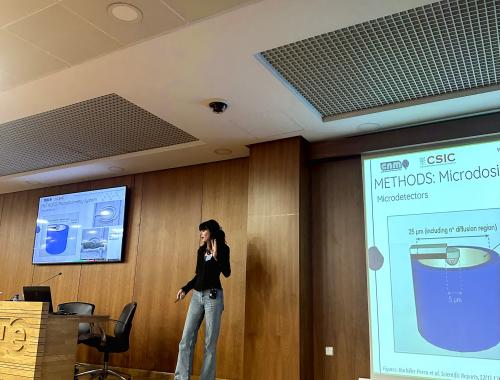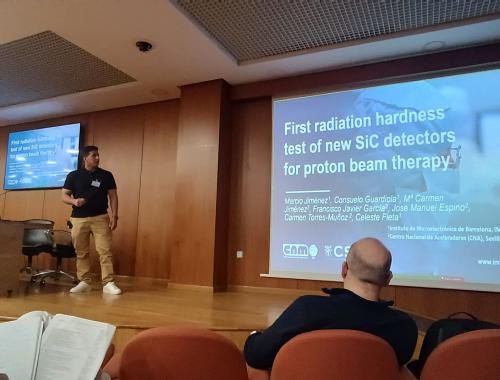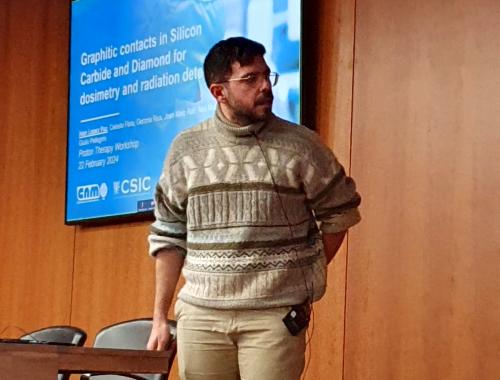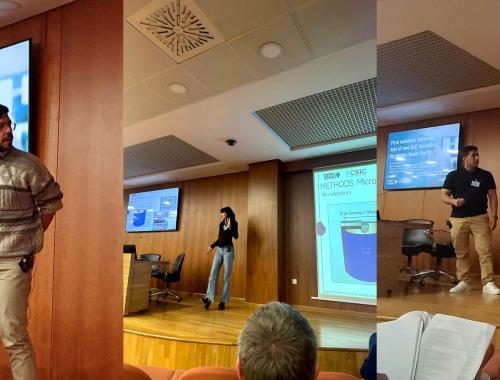IMB-CNM contribution to the Workshop on Proton-Therapy in Valencia
The “Workshop on Technologies & Applied Research at the Future Valencian Proton-Therapy Facility” took place at the end of February in Valencia. It brought together the main agents and research groups involved in proton therapy research in Spain and Europe. Consuelo Guardiola, researcher at IMB-CNM, was a member of the Organizing Committee leading the contribution of the institute to the sessions.
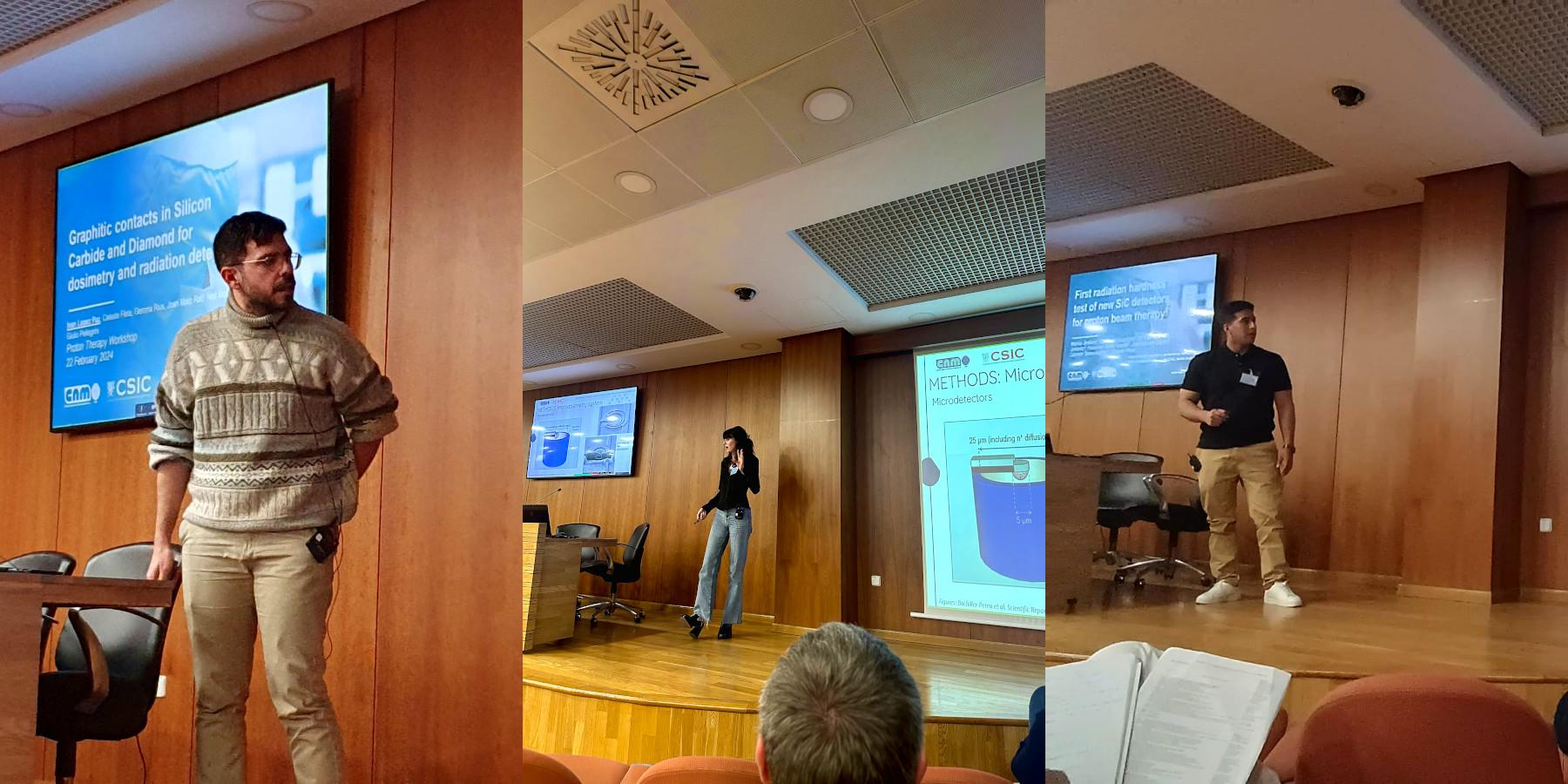
Consuelo Guardiola, researcher at the Institute of Microelectronics of Barcelona (IMB-CNM-CSIC) working in proton therapy, was a member of the Organizing Committee for the Workshop on Technologies & Applied Research at the Future Valencian Proton-Therapy Facility, celebrated in Valencia from February 21st to 23rd.
The objective of the sessions was to foster collaboration and knowledge transfer between the clinical and scientific-technological communities and devise strategies to optimize the use of the future network of 10 new proton therapy facilities in Spain, both in terms of clinical treatment, research and innovation applications. Another crucial aim of the workshop is to encourage and facilitate collaboration and communication with global experts in the field of proton therapy, who have well-established expertise in both clinical and technological aspects. Consequently, the workshop featured the participation of an international scientific panel comprising experts from Germany, France, United Kingdom, Poland, Portugal, and Switzerland.
Guardiola also acted as Chair of the Session regarding “Applied Research on Tratment Monitoring & Dosimetry” and other three members of the Radiation Detectors Group showcased their research in parallel sessions: predoctoral researchers Carla Riera-Llobet and Marcio Alfonso Jiménez Venegas and postdoctoral researcher Iván López Paz presented their work. The following descriptions are taken out of their abstracts.
First microdosimetry maps in low energy proton beams
Carla Riera-Llobet
Around 40% of people surviving cancer do so because of radiotherapy. However, to improve this statistic, treatments based on hadron radiotherapy (HT) are rapidly expanding worldwide. HT achieves very high dose conformity around the tumor target, allowing better protection of the organs at risk. This is particularly critical for radioresistant tumors, for tumors localized near organs at risk, and for pediatric cancers. Nevertheless, some toxicities have recently been reported.
It might be because ions deliver higher linear energy transfer (LET), which may generate collateral damages, e.g., acute and late effects, and even secondary cancer induction. However, there are no tools capable of measuring LET during treatments. In this context, the Institute of Microelectronics of Barcelona (IMB-CNM) has designed and manufactured new silicon 3D detectors based on a novel architecture of cylindrical electrodes with microscopic sizes as those from a cellular level. This allows quantifying the LET at micrometer scale, namely lineal energy.
Moving towards their clinical implementation requires designing large layouts covering several centimeters based on these successful prototypes and performing significant pre-clinical trials. The advanced detectors could also be used for beam monitoring and dose evaluation during radiobiology trials in real-time. The present work shows the performance of the first multi-pad-type array of those 3D microdetectors.
First radiation hardness tests of new silicon carbide dosimeters for proton beam therapy
Marcio Alfonso Jiménez Venegas
Proton therapy is an important radiotherapy that achieves very high dose conformity around the target, allowing a better protection of the organs at risk (decreasing radiation side effect). However, the dose delivered to a tumor is still conditioned by the dose that can be tolerated by the surrounding normal tissues. An emerging approach called FLASH therapy delivers a therapeutic dose several orders of magnitude faster than in current clinical cases.
The physical properties of silicon carbide (SiC) make it an interesting material for radiation dosimetry. The wide SiC band-gap decreases the rate of thermally generated charge carriers, reducing the leakage current and the noise compared to silicon. It also makes SiC essentially insensitive to visible light and temperature variations. SiC has a higher displacement energy threshold and thus a higher radiation hardness than silicon, and has a higher thermal conductivity which makes it more resistent to thermal shocks.
At IMB-CNM we have designed and fabricated novel silicon carbide PiN diodes with the aim to respond to the technological challenges of new radiotherapy approaches such as proton therapy and FLASH therapy and have performed their validation in relevant beams. For example, in a first characterization with FLASH electron beams, these diodes have shown their suitability for relative dosimetry up to a dose per pulse of 11 Gy. These devices were tested at the CNA in Sevilla, with the aim of studying their signal response, sensitivity and radiation hardness.
Study of epitaxial graphene contacts for Silicon Carbide radiation dosimetry and detection
Iván López Paz
Silicon Carbide (SiC) is a radiation hard wide bandgap semiconductor, which makes it an interesting alternative for radiation detection applications such as radiotherapy instrumentation. Reducing the amount of metal over the active can positively affect the accuracy of the measurement.
The first SiC diodes with epitaxial graphene contacts were produced at IMB-CNM for radiation detection. These detector prototypes have been characterized by means of a pulsed laser transient current measurement and a radioactive alpha source, showcasing the charge collection properties. These measurements have been followed by a characterization by means of a Linac at the University of Santiago de Compostela. These show a percent-level dose rate linearity of the prototypes, which is promising for future iterations for the medical application.





